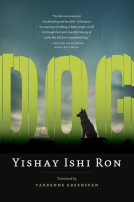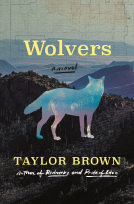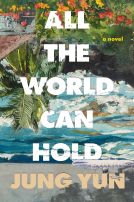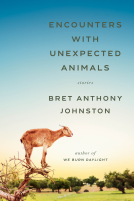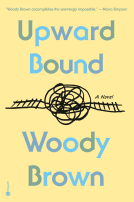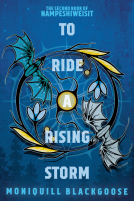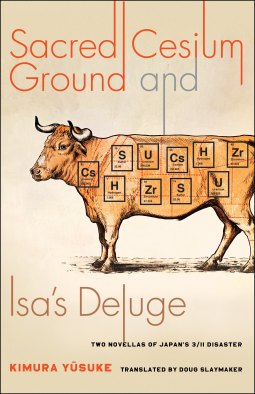
Sacred Cesium Ground and Isa's Deluge
Two Novellas of Japan's 3/11 Disaster
by Kimura Yūsuke
This title was previously available on NetGalley and is now archived.
Send NetGalley books directly to your Kindle or Kindle app
1
To read on a Kindle or Kindle app, please add kindle@netgalley.com as an approved email address to receive files in your Amazon account. Click here for step-by-step instructions.
2
Also find your Kindle email address within your Amazon account, and enter it here.
Pub Date Jan 29 2019 | Archive Date Mar 25 2019
Talking about this book? Use #SacredCesiumGroundAndIsasDeluge #NetGalley. More hashtag tips!
Description
In Sacred Cesium Ground, a woman from Tokyo travels to volunteer at a cattle farm known as the “Fortress of Hope,” tending irradiated animals abandoned after the reactor meltdown. The farm closely resembles an actual ranch that has been widely covered in Japan, and the story’s portrayal of those who stubbornly care for animals in spite of the danger speaks to the sense of futility and meaningfulness in the wake of traumatic events. Isa’s Deluge depicts a family of fishermen whose crotchety patriarch draws on old tales of the floods that have plagued the region to fashion himself as the father of the tsunami. Together, the novellas present often-unheard voices of one of Japan’s peripheral regions and their anger toward the government and Tokyo for mishandling and forgetting their part of the country. Kimura’s command of dialect and conversational language is masterfully translated by Doug Slaymaker. Postapocalyptically surreal yet teeming with life, Kimura’s stories will be a revelation for readers looking for a new perspective on the disaster’s consequences for Japan and on the interrelated meanings of human and animal lives and deaths.
Advance Praise
"Kimura pulls the reader into the irradiated zone where residents struggle for justice against a government that treats them as disposable as the cattle they illegally tend. Sacred Cesium asks tough questions: What will happen to Japan’s irradiated areas? Who is responsible for this nuclear tragedy? Slaymaker’s translation brings this important novel into dialogue with nuclear fiction worldwide."
—Rachel DiNitto, University of Oregon
"Isa's Deluge is at once a story of the triple disaster in northeastern Japan and one man's search for his roots. Kimura's themes of destruction and ancestry culminate in an unforgettable, searing attack by the long marginalized against powers that be."
—Davinder Bhowmik, University of Washington
Available Editions
| EDITION | Other Format |
| ISBN | 9780231189439 |
| PRICE | $21.00 (USD) |
Average rating from 16 members
Featured Reviews
 Matt J, Reviewer
Matt J, Reviewer
I was so excited for this book! While I think some of the ideas were really interesting, I was a little bummed when it came to how the story developed, particularly when it came to Sacred Cesium Ground. The concept is fascinating and necessary, but the novella itself felt like more of a case study of particular character's experience (which is cool in its own way} rather than a story.
 Melise G, Reviewer
Melise G, Reviewer
This book includes two Japanese novellas, both set in the region of Japan that was heavily damaged by the Fukishima nuclear disaster and the tsunami.
The first one tells the story of a woman from Tokyo who volunteers to work on a farm in the affected area. The farmers who lived in the area were told to slaughter all of their animals, but many were unable or unwilling to do so. So one man gathers these irradiated animals together and tries to keep them fed and healthy, relying on volunteer helpers and feed that he can scrounge up in this deserted region. The woman chooses to volunteer partially as an escape from her overbearing husband, but she finds so much meaning in caring for these animals that she begins to perceive her life and goals differently.
The second story is the story/legend of a samurai who lived in the region. This story takes the form of some men sitting around a fire telling stories, and includes flashbacks of the samurai's story. There is an element of magical realism to the story as well, and elements from the historic story begin to merge with the experiences of the men sitting around the campfire.
I really enjoyed the first story--her experiences learning to care for the animals were interesting and humorous, and her discomfort about the way the farm is commercialized is believable and relatable. The second story did not work as well for me--it felt as if the whole story was referencing cultural history and knowledge that I did not know, and so I felt as if I lost much of the underlying meaning. I also had a difficult time following the switches between time frames and reality and magic--but that is a common problem for me in general, so I won't blame this book itself.
I received an advanced reading copy from the publisher via NetGalley. Thanks!
 Urbano R, Educator
Urbano R, Educator
I didn't care for the prose style in the story, finding it flat and uninteresting. Thus, I did not finish it.
 Annie S, Librarian
Annie S, Librarian
In April of 2011, northern Japan suffered a trio of disasters. A massive offshore earthquake triggered an even bigger tsunami, which immediately caused a nuclear meltdown at the Fukushima Daiichi Power Plant. These disasters and the long (still partly unfinished) cleanup after are never far in the background in Yusuke Kimura’s two novellas, Sacred Cesium Ground and Isa’s Deluge (translated by Doug Slaymaker).
In Sacred Cesium Ground, our protagonist gives us a front row seat to one of the more gutting consequences of the three disasters. Because of the catastrophic and wide-reaching radiation contamination, people were told to leave their animals behind when they were evacuated. Some animals starved to death before their owners could return for them. Nishino, our narrator, has heard of a farm called the Fortress of Hope, where a rancher is collecting abandoned cattle instead of putting the animals down per government orders. Nishino has left her unsatisfying and abusive life in Tokyo to volunteer at the Fortress. In Isa’s Deluge, a young man named Shōji begins collecting stories about his notoriously violent uncle Isao (called Isa). The stories and the possibility that he might someday publish a slightly fictionalized version of them keep him going even though his life is nearly as depressing and purpose-less as Nishino’s is. Reading Sacred Cesium Ground and Isa’s Deluge reminded me strongly of Convenience Store Woman by Sayaka Murata in that all three of these stories are about characters who don’t fit, who don’t have the same reactions as other people. Sacred Cesium Ground and Isa’s Deluge, however, pack a bigger emotional punch.
An interesting wrinkle to these stories is revealed in the translator’s afterword. Slaymaker writes that Kimura’s novellas are based closely on the author’s own experiences. The Fortress of Hope is modeled on an actual farm of rescued cows. The stories about Uncle Isa are based on family stories from the author’s own family. These two novellas, however, didn’t strike me as auto fiction. Described purely in terms of plot, these novellas seem relatively simple. What makes these stories complicated is the emotional depth and their commentary on Japanese society and the official response to the disaster. As I read both of them and followed the action, I could also see Nishino and Shōji winding themselves up in frustration, helplessness, sense of misunderstanding, and anger at everything until they snap. Autofictional stories—at least the ones I’ve read before—are heavier on the plot than they are on the character studies.
Slaymaker writes in that same afterword that he struggled to convey the Northern Japanese dialect the characters speak, but I didn’t notice anything too unnatural with his solution of having the characters talk a bit like lower class New Yorkers. The accent doesn’t detract from the emotional struggles of the characters or the unsettlingly detailed descriptions of the tsunami ravaged landscape. I can’t exactly say that I enjoyed reading these novellas, given the subject matter. (Sacred Cesium Ground is particularly wrenching for me.) But I can say that I appreciated them a lot for the way they grapple with the Japanese psyche and the unhealed wounds of April 2011.
 Greg Y, Reviewer
Greg Y, Reviewer
Yusuke Kimura comes from the north of Japan, where the 2011 tsunami and the subsequent nuclear accident occurred. These two novellas are about the lives of the people left to struggle on in the aftermath of these twin disasters.
Sacred Cesium Ground is about a woman who leaves her abusive husband to volunteer at a ranch that looks after cattle that have been subjected to massive radiation. The rancher has been ordered by the government to put the animals down but refuses to do so. (This is based on a real case, apparently). Kimura conveys an excellent study in the ethical quandaries of exposing oneself to unnecessary risk and of prolonging the lives of doomed animals.
Isa's Deluge is about a young man who returns to his home town from Tokyo, and his interest in tracking down his black sheep uncle Isa. The other members of his fishing family scorn him and oppose his digging up the past, and the wider community now treats him as an outsider, since he does not share their defining experience of the tsunami.
I preferred the first story, but both of these are well worth a read.
Readers who liked this book also liked:
We Are Bookish
Mystery & Thrillers, OwnVoices, Teens & YA

